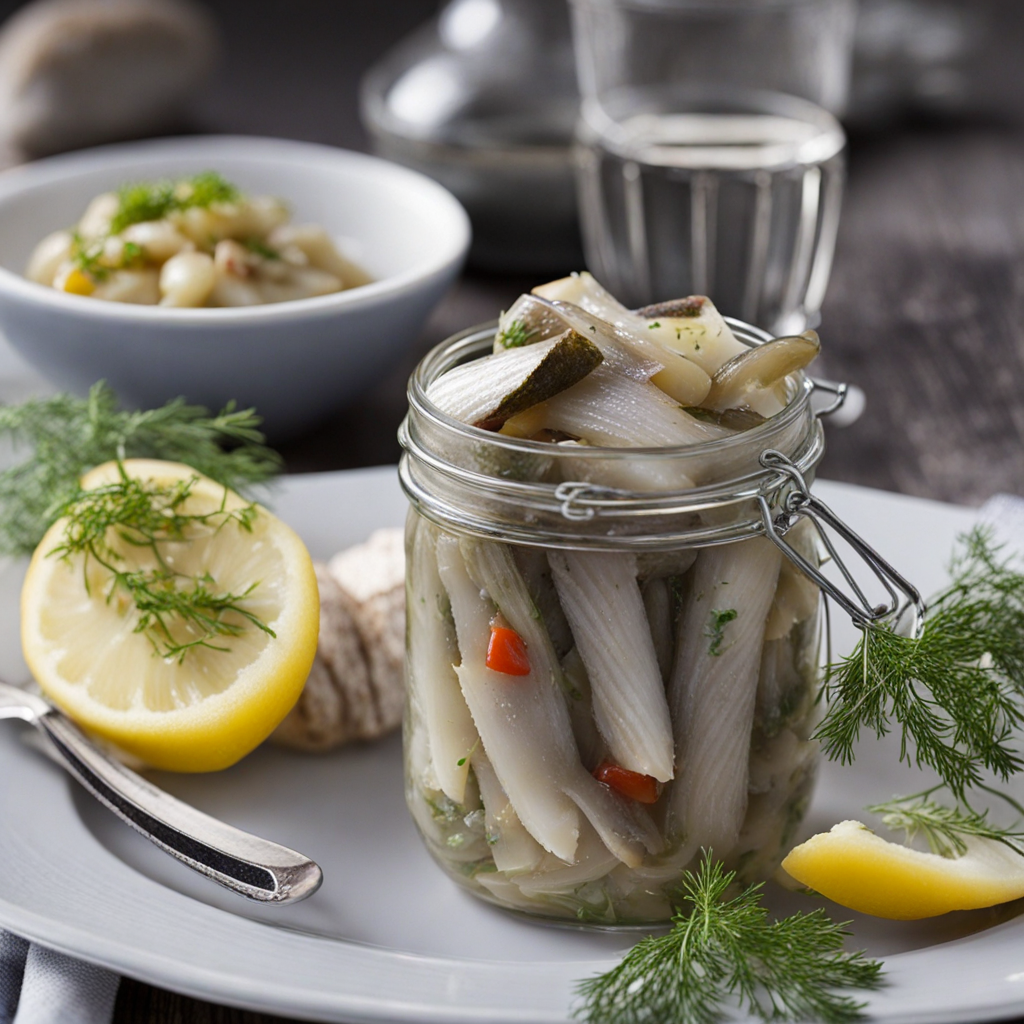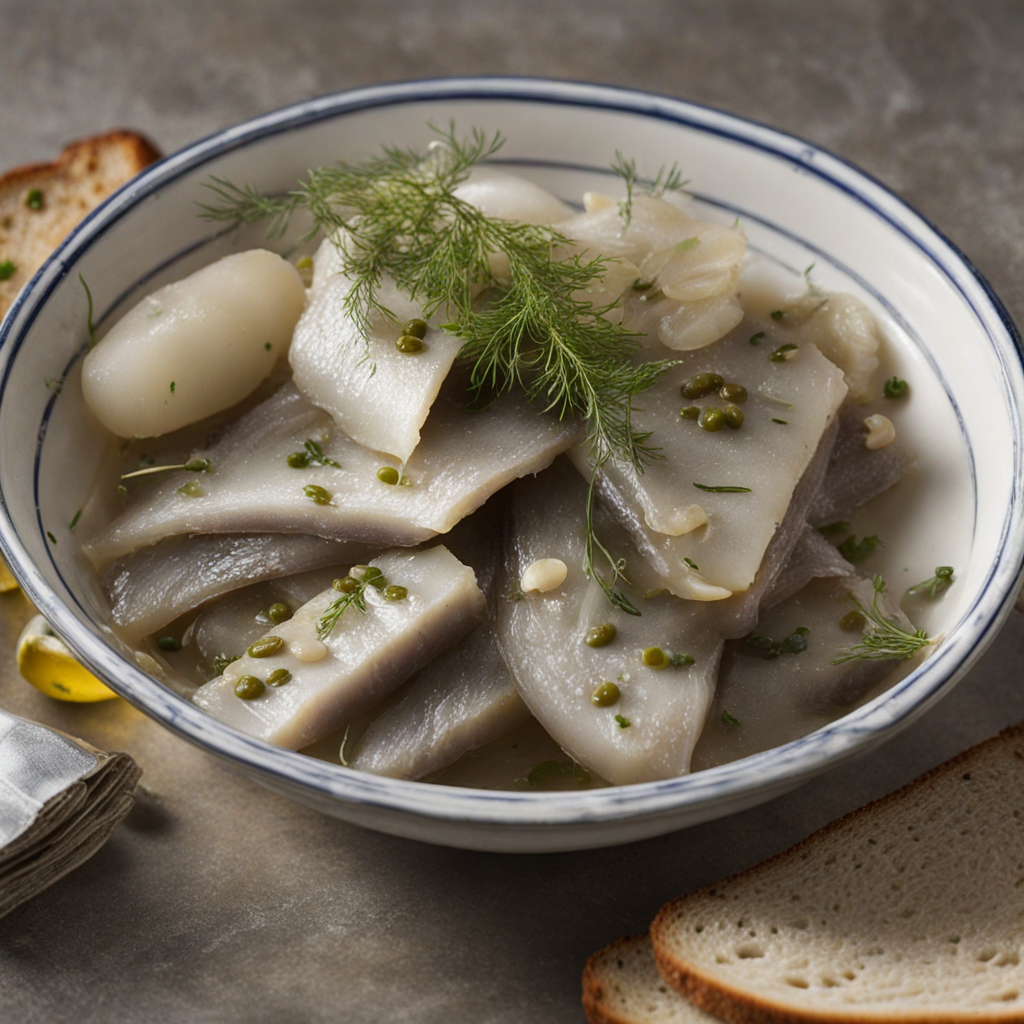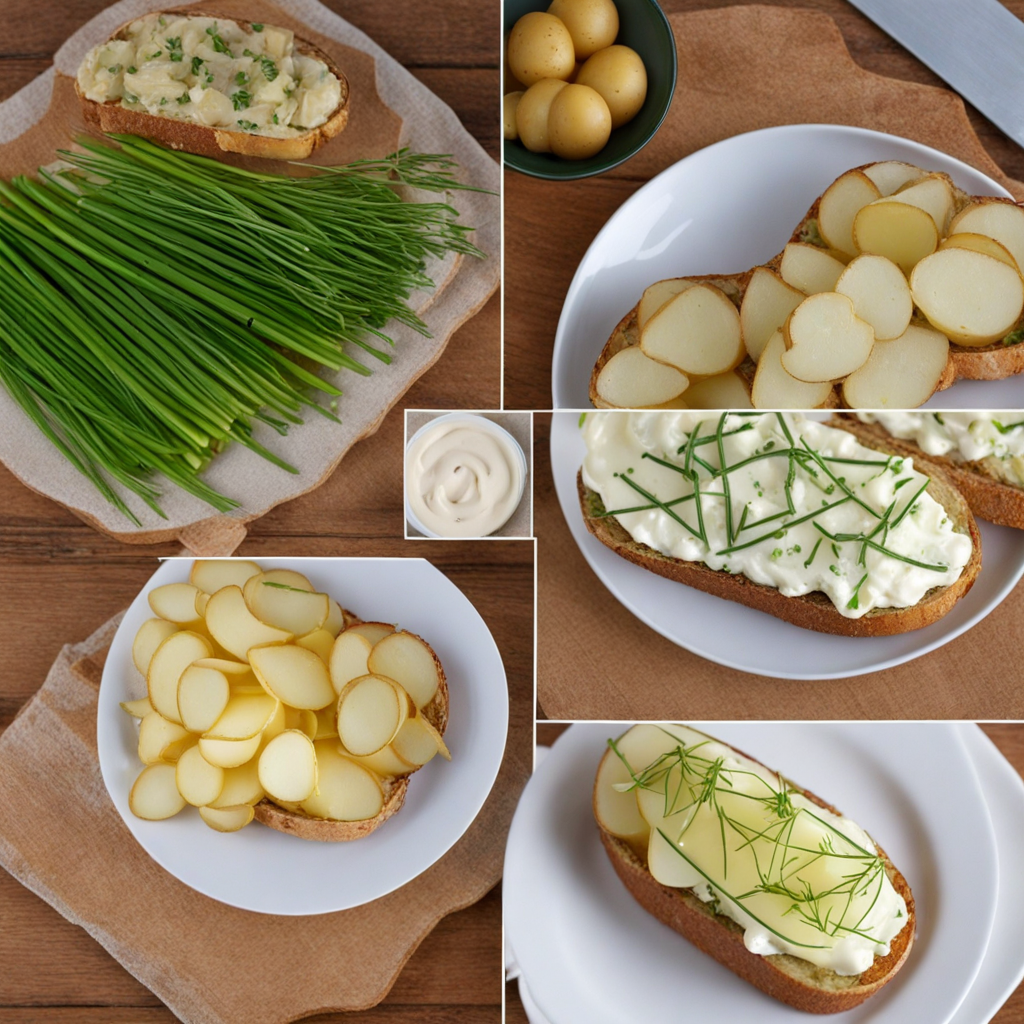Marinerede Sild
Marinerede Sild, or marinated herring, is a delightful Danish dish that showcases the rich maritime heritage of Denmark. This traditional delicacy features herring fillets that are preserved in a flavorful marinade, typically made from a blend of vinegar, sugar, and spices. The herring is often pickled with onions, bay leaves, and peppercorns, resulting in a balance of sweet, sour, and savory notes that tantalize the palate. The fish itself is tender and flaky, absorbing the aromatic flavors of the marinade, making each bite a burst of maritime goodness. Served cold, Marinerede Sild is commonly enjoyed as part of a traditional Danish smorgasbord, where it is accompanied by rye bread, boiled potatoes, and fresh herbs. The dish is often garnished with sliced onions, capers, or dill, adding a touch of freshness that complements the richness of the herring. The combination of textures and flavors creates a harmonious experience, where the tangy marinade enhances the natural taste of the fish, giving it a unique twist that is both satisfying and refreshing. Marinerede Sild is more than just a dish; it is a celebration of Danish culture and history. This culinary gem embodies the essence of coastal living, making it a beloved staple in Danish households and festive gatherings. Whether enjoyed as an appetizer or a main dish, this pickled herring invites food enthusiasts to explore the charm of Scandinavian cuisine, offering a taste of the sea that is both nostalgic and invigorating.
How It Became This Dish
The History of Marinerede Sild: Denmark's Pickled Herring #### Origins and Historical Context Marinerede sild, or pickled herring, is a quintessential Danish dish that has its roots deeply embedded in the maritime traditions of Northern Europe. Herring has been a significant part of the diet in coastal communities for centuries, with evidence of its consumption dating back to ancient times. The fish itself has been a staple for various cultures due to its abundance in the North Atlantic and the North Sea. The practice of preserving fish can be traced back to the days before refrigeration, when salting and pickling were essential for extending the shelf life of perishable goods. The method of marination not only preserved the fish but also enhanced its flavor profile, leading to the delightful dish known as marinerede sild. The use of vinegar, sugar, and various spices in the pickling process reflects a blend of practicality and culinary creativity that has evolved over generations. #### Cultural Significance In Denmark, marinerede sild is more than just a food item; it is a cultural icon. It is commonly served during festive occasions, notably during Christmas and Easter, and features prominently on the traditional smørrebrød, the famous Danish open-faced sandwich. The dish embodies the spirit of Danish cuisine, which emphasizes simplicity, freshness, and a connection to the sea. Marinerede sild is often accompanied by a variety of garnishes, including onions, capers, and dill, which complement the tangy flavor of the pickled fish. The dish is not only appreciated for its taste but also for its communal aspect. Sharing marinerede sild among family and friends during gatherings fosters a sense of togetherness, making it an integral part of Danish hospitality. #### Development Through Time As Denmark transitioned through various historical epochs, so too did the preparation and presentation of marinerede sild. The 17th century marked a significant period in the history of pickling, as the Danish economy expanded and trade routes flourished. Herring became a vital export product, leading to the establishment of multiple fishing villages along the Danish coast. This period saw the rise of commercial herring processing, with innovations in pickling methods that allowed for mass production. In the 19th century, as industrialization took hold, the availability of herring increased, and so did the variety of pickling recipes. Different regions of Denmark began to develop their own unique styles of marinerede sild. For instance, in the northern regions, a sweeter version might be preferred, while in the southern parts, a more tart and spicy variant could be found. This regional diversity enriched the dish, making it a versatile staple in Danish cuisine. The introduction of new ingredients from global trade also influenced the evolution of marinerede sild. Spices from the East Indies and the Caribbean began to appear in Danish cooking, adding complexity to the flavor profiles. Ingredients such as allspice, cloves, and even curry powder found their way into various pickling solutions, showcasing the adaptability of this dish to contemporary tastes. #### Modern Interpretations and Global Influence In recent decades, marinerede sild has continued to evolve, influenced by both globalization and culinary innovation. Modern chefs have begun to experiment with traditional recipes, incorporating unexpected elements while respecting the dish's heritage. For example, some chefs might enhance the pickling brine with local craft beers or incorporate seasonal vegetables to offer a contemporary twist. Moreover, the rise of the New Nordic Cuisine movement, which emphasizes local and seasonal ingredients, has propelled marinerede sild back into the culinary spotlight. High-end restaurants and food markets across Denmark and beyond feature artisanal versions of the dish, often presented in a manner that showcases its elegance and sophistication. Internationally, marinerede sild has garnered attention as a symbol of Danish gastronomy. It has been featured in culinary festivals and food exhibitions, introducing new audiences to its rich history and flavor. As travelers explore Scandinavian cuisine, marinerede sild often emerges as a must-try dish, drawing in those curious about the region's culinary traditions. #### Conclusion Marinerede sild stands as a testament to Denmark's deep-rooted connection to the sea and its rich culinary heritage. From humble beginnings as a staple for fishermen and coastal communities to its status as a celebrated dish on festive tables and gourmet restaurants, the evolution of marinerede sild reflects broader historical, cultural, and economic changes. Today, this pickled herring dish continues to be a beloved part of Danish life, bridging the past with the present while inviting future generations to cherish and innovate upon this time-honored tradition. As Denmark continues to navigate the waters of global cuisine, marinerede sild will undoubtedly remain a cherished symbol of its culinary identity, a dish steeped in history, culture, and community.
You may like
Discover local flavors from Denmark







